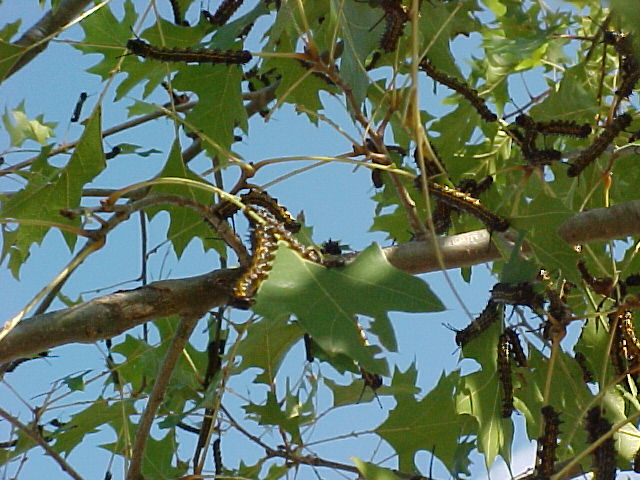Pest Alert – Orange Striped Oakworm
go.ncsu.edu/readext?1018641
en Español / em Português
El inglés es el idioma de control de esta página. En la medida en que haya algún conflicto entre la traducción al inglés y la traducción, el inglés prevalece.
Al hacer clic en el enlace de traducción se activa un servicio de traducción gratuito para convertir la página al español. Al igual que con cualquier traducción por Internet, la conversión no es sensible al contexto y puede que no traduzca el texto en su significado original. NC State Extension no garantiza la exactitud del texto traducido. Por favor, tenga en cuenta que algunas aplicaciones y/o servicios pueden no funcionar como se espera cuando se traducen.
Português
Inglês é o idioma de controle desta página. Na medida que haja algum conflito entre o texto original em Inglês e a tradução, o Inglês prevalece.
Ao clicar no link de tradução, um serviço gratuito de tradução será ativado para converter a página para o Português. Como em qualquer tradução pela internet, a conversão não é sensivel ao contexto e pode não ocorrer a tradução para o significado orginal. O serviço de Extensão da Carolina do Norte (NC State Extension) não garante a exatidão do texto traduzido. Por favor, observe que algumas funções ou serviços podem não funcionar como esperado após a tradução.
English
English is the controlling language of this page. To the extent there is any conflict between the English text and the translation, English controls.
Clicking on the translation link activates a free translation service to convert the page to Spanish. As with any Internet translation, the conversion is not context-sensitive and may not translate the text to its original meaning. NC State Extension does not guarantee the accuracy of the translated text. Please note that some applications and/or services may not function as expected when translated.
Collapse ▲The orange striped oakworm is a caterpillar that defoliates oak trees. The full grown caterpillars are 1 1/2 to 2 inches long. They are black in color with several narrow, yellow-orange longitudinal lines. Behind the head are a pair of stiff, blunt spines, about the thickness of the body. The remaining segments of the body have pairs of smaller spines.
The orange striped oakworm caterpillar generally appears in August or September. They defoliate sections of various oak species and sometimes completely defoliate smaller trees.
Although the leaf feeding habit of the insects larvae is not harmful to the tree, The insect can be troublesome when present in oaks over patios, driveways, etc. The large amount of excrement that the caterpillars drop can stain decks and patios.
The insect passes the winter in the pupa stage in the ground below oak trees. The moths emerge from June-August and mate with the females depositing their eggs on the underside of the host plants. The good news is that there is only one generation per year and control measures are not necessary. If you do have them making a mess on your patio, just rinse it off daily and they will soon be gone.






